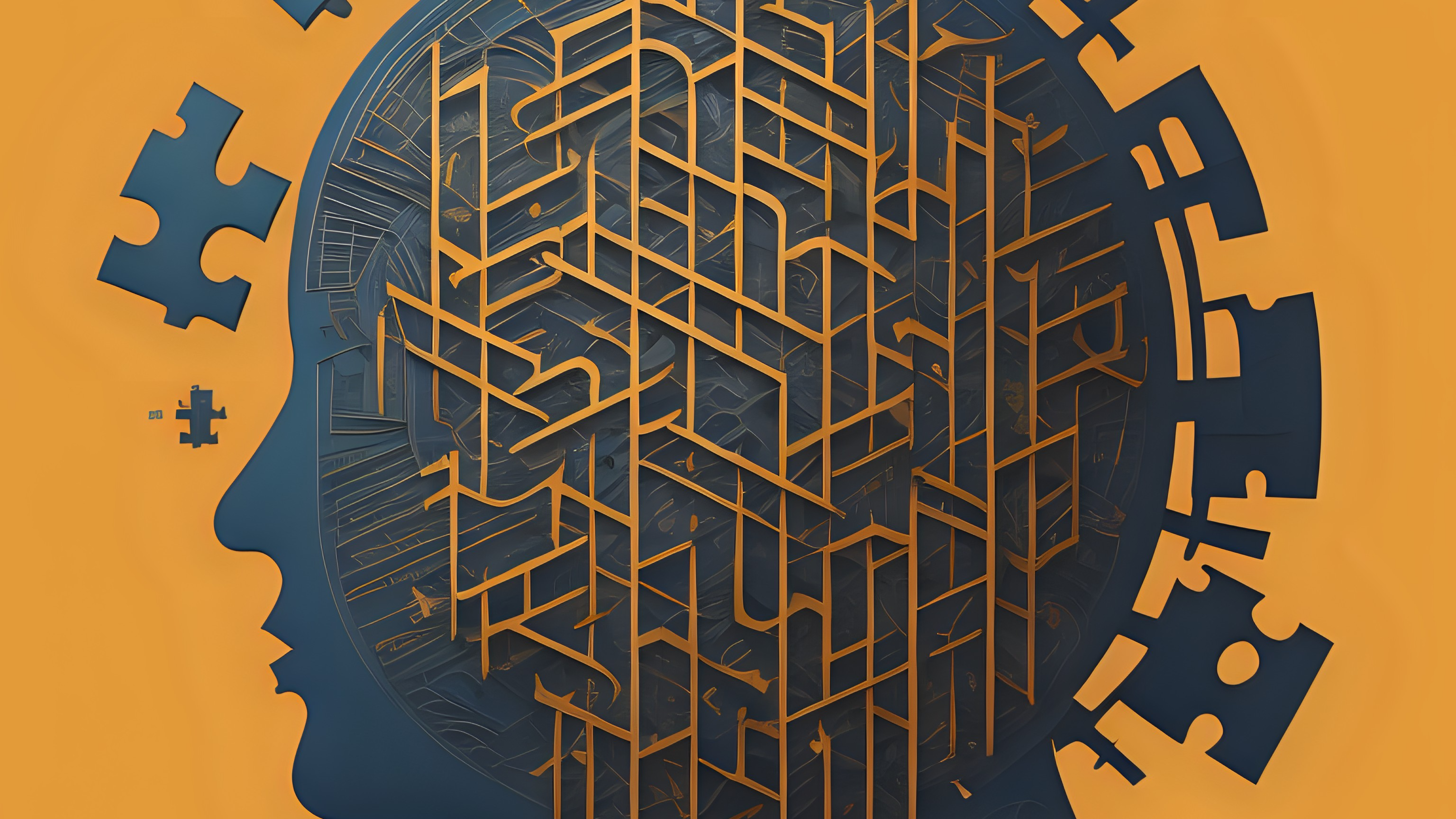

Navigating Enigma puzzles is akin to unraveling a tightly wound spool of thread. Consider facing a perplexing maze; each step forward could lead to further entanglement or, with strategic thought, a path to clarity and triumph in untwisting the complex pathways.
While it feels daunting to stand before the cryptic grids and cipher texts of these intricate problems, 'Enigma'—a term synonymous with mystery—adept puzzlers embrace the challenge, as they know that each solved puzzle is a testament to their skillful unraveling of its enigmatic core. Steady minds unlock secrets.
In Enigma puzzles, recognizing patterns is paramount. Vigilance in scrutinizing sequence and repetition can illuminate concealed correlations, whether numerically, symbolically, or linguistically. Seek out anomalies within the established order, for these often hold the key to decrypting the crafted confusion. Intuition coupled with analytic rigor transforms what appears to be chaos into a discernible structure, guiding the solver closer to the hidden truths lying beneath a veil of complexity.
Enigma puzzles often weave a fabric of recurring motifs, cleverly designed to test cognitive agility and thematic recognition skills. In the landscape of enigmas, the most elegant solutions often arise from recognizing and harnessing ubiquitous patterns. Building expertise in identifying these themes accelerates comprehension and paves the way to mastering more advanced and ornate puzzles, whose solutions depend on a nuanced awareness of such recurrent motifs. Adept puzzle solvers cultivate an instinct for thematic elements—symbols, narratives, or historical references—that frequently recur, enriching their approach to each new enigmatic challenge.
Within enigmatic texts, letter frequencies emerge as a critical cipher key. By analyzing these frequencies, one can start exposing the underlying language structure. Decoding a puzzle often involves scrutinizing the distribution of letter occurrences. English text, for instance, commonly exhibits a high frequency of vowels and certain consonants, such as 'E,' 'T,' 'A,' 'O', 'I,' 'N,' and 'S.' Detecting which symbols represent these letters can unlock significant portions of the puzzle, leading to more informed guesses about other aspects of the coded message. Consequently, understanding statistical norms for letter appearance in a given language is invaluable for unearthing the concealed meaning.
Moreover, certain letters appear more frequently in pairs or clusters within a language context. When examining cipher text, identifying common bigrams or trigrams—such as 'TH,' 'ER,' 'ON,' and 'AN'—can further refine the deciphering process. These combinations can provide substantial leverage in cracking encryption by revealing the syntax and cadence of the intended message, thus restricting a path toward complete comprehension. Ultimately, by carefully monitoring letter frequencies within enigmatic texts, one gains the upper hand in decrypting content shrouded in obscurity. This process often reveals patterns of usage that can hint at the nature of the encryption employed. Mastery of frequency analysis can prove essential in untangling the intricate threads of an enigma, thereby elevating the adeptness of the solver in the art of cryptanalysis.
Enigma puzzles demand meticulous analysis of the cryptographic components to discern underlying structures. Success hinges on a solver's ability to uncover patterns that obfuscate the intended message, thus navigating the problem. One must systematically examine the puzzle's elements to achieve this, considering permutations, frequency, and positional analysis. This approach reveals alignments between the ciphered data and expected linguistic constructs, essential in breaking down cryptographic barriers and illuminating the solution.
Deciphering enigmas requires patience and an iterative methodology. Only through persistent examination and hypothesizing can one hope to peel back the layers of complexity and arrive at the kernel of truth concealed within.
Complex clues are often the linchpins of Enigma puzzles, concealing the path to decipherment.
Consistent methodology in tackling each part is vital. Remember, persistence is paramount when disentangling the complexities of Enigma clues.
In Enigma puzzles, extraneous possibilities can obscure the correct path. Initially, discard options that conflict with known facts or patterns. This pruning of the decision tree accelerates solving efficiency. Stripping away the infeasibles, the plausible answers begin to surface.
Gradually eliminating options narrows the scope and intensifies focus. Each data point received from a clue should serve to weed out non-candidates. This approach concerns refinement and precision, homing in on viable solutions with surgical exactitude. Details matter enormously; a single overlooked element can derail progression.
Consider each clue's role within the broader puzzle context. Clues often interlock; solving one may invalidate multiple others, akin to a domino effect. You reduce the puzzle to its most basic elements by continuously applying elimination. This simplification is foundational in puzzle-solving strategies, ensuring a systematic path toward resolution.
Reevaluation after each elimination is critical. Feel free to backtrack if an assumed incorrect path reveals new insights. A dynamic and adaptive mindset is requisite, poised to reconfigure strategies based on emerging evidence. It's about evolving your approach as the puzzle landscape shifts.
The process of elimination is a mainstay in the Enigma solver's toolkit. By methodically discounting the impossible, what remains, however improbable, must be considered. It is in this distilled pool of opportunity that solutions are often found.
Puzzle-solving, particularly with Enigmas, necessitates continuously sharpening one's cognitive faculties. The mental gymnastics involved call for and foster a higher level of analytical thinking, pattern recognition, and logical reasoning. Engaging regularly with such intricate challenges is akin to a rigorous brain workout, improving mental agility and staving off cognitive decline associated with aging processes.
Moreover, as one delves into Enigma puzzles, one engages in neuroplasticity—the brain's ability to reorganize itself by forming new neural connections throughout life. This reorganization is stimulated by learning new skills, such as deciphering complex puzzles, which enhances memory retention, improves attention to detail, and cultivates problem-solving strategies that can be applied beyond the parameters of the puzzle world. Thus, solving Enigmas can be seen as an intellectual investment, with dividends paid in sharpened cognitive abilities across all walks of life.
Engage in targeted puzzle practice regularly. By nature, Enigma puzzles demand a disciplined mind. One must learn to deconstruct complex problem structures, identify patterns, and employ strategic deductions. Like a skilled chess player, one must anticipate outcomes and maneuver through layers of abstraction. Consequently, shifting your perspective is vital to unlocking the path to resolution—a skill honed through meticulous and frequent engagement with these puzzles.
Logic is the cornerstone of Enigma puzzle resolution. When confronting an Enigma, it is helpful to proceed methodically—breaking down the puzzle into its base components and then building a solution incrementally. This piecemeal approach allows for a structured and straightforward path to unraveling the complexity.
The pursuit of Enigma puzzles enhances cognitive flexibility. By the year 2023, the landscape of puzzle-solving has decidedly evolved, integrating advanced problem-solving frameworks with increasingly intricate puzzle structures. Continuous engagement with such Enigmas strengthens neurological adaptability, fostering a mindset receptive to new techniques and proficient in various problem-solving strategies.

